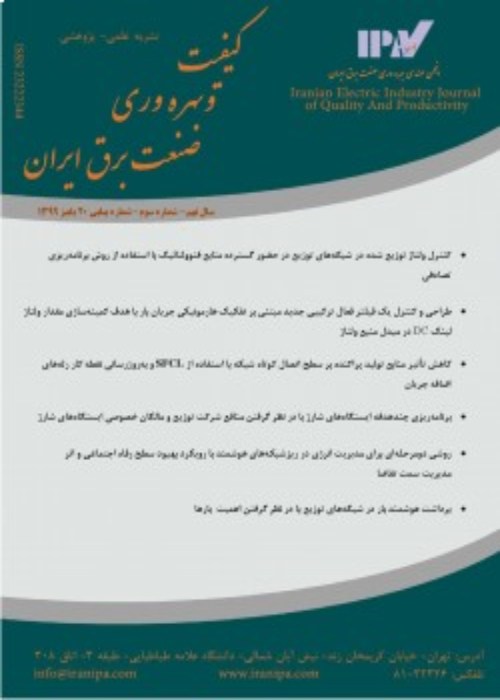Optimal scheduling for the electrical energy consumption of residential buildings in a microgrid considering the priority of operation through IoT infrastructure
Demand-side response in residential homes is responsible for significant changes in their electricity consumption patterns. Such systems are implemented to shift the load from peak hours to off-peak hours. This approach not only reduces the costs of consumer’s energy bills but also brings about many benefits such as postponing power system planning investments, improving network reliability, reducing unexpected outages, and so on. This paper introduces a new structure for managing the electrical energy consumption of residential homes via power aggregation by considering the consumers’ priorities in a microgrid. In this situation, the performance priorities of the controllable types of equipment are first sent along with the consumption information of the total electrical equipment to the power aggregator unit through a smart meter. After gathering all information from customers, scheduling is done by a power aggregator in which network constraints are considered. Finally, management programs are sent as a series of binary codes directly from the aggregator to the smart sockets with the help of the Internet of things (IoT) infrastructure. In fact, in this project, there is no need to use home energy management systems (HEMSs) for residential homes, and only smart meters are employed to send information. In this method, information is sent directly from the central control unit to the smart sockets using the IoT technology and the process of information by another separate unit is not needed. In other words, consumption planning for all consumer’s controllable devices is coordinated from the power aggregation’s point of view to minimize the energy cost of all consumers by taking the constraints of the distribution network and all consumption priorities into account. In this project, an IEEE standard 15-bus microgrid with 50 households (with the average consumption pattern of a 4-person household for 3 months) is used. For each family, there are 12 electrical devices, in which two of them (dishwasher and washing machine) are considered as controllable appliances, and all planning programs are done for scheduling their operating time. The time horizon is considered 24 hours consisting of 15-min time-steps. To better understand the results in different working conditions, six different scenarios are defined in this regard and the results are compared with each other. Finally, according to the simulation results based on the time of use (TOU) tariff defined for 2019 in Iran, it can be realized that by planning the consumption of controllable types of equipment, 42.1% of peak-load duration cost and 21.8% of the total cost of electricity consumption is saved.
- حق عضویت دریافتی صرف حمایت از نشریات عضو و نگهداری، تکمیل و توسعه مگیران میشود.
- پرداخت حق اشتراک و دانلود مقالات اجازه بازنشر آن در سایر رسانههای چاپی و دیجیتال را به کاربر نمیدهد.


